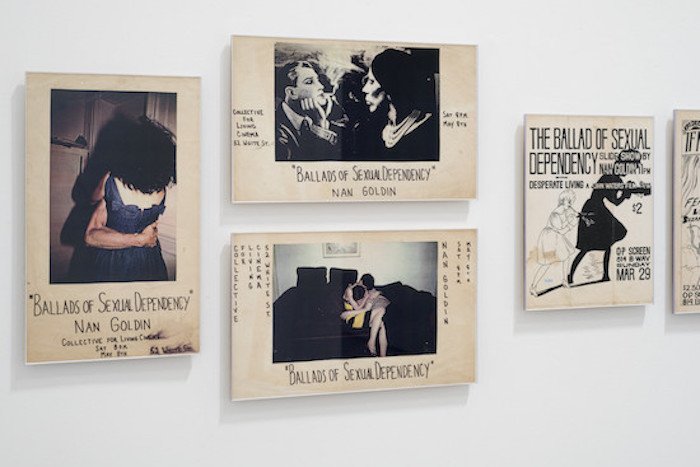NAN GOLDIN AND HER COMMUNITY
A Cultural Serving NAN GOLDIN AND HER COMMUNITY
There’s “a difference between the story and the real memory,” says the activist-artist Nan Goldin. “Even if you don’t unleash the memories, the effect is there. It’s in the body.”
This culturally apt sentiment is how Goldin opens the critically acclaimed documentary about her life and work, All the Beauty and the Bloodshed (dir. Laura Poitras). The idea is that there’s an unbridgeable cavern between language and corporeal experience, and it foregrounds much of the film. Agonizing, beautiful, and always alluring, the documentary delves into the photographer’s early life, disruptive entrance into the art world–she divulges this did involve a portfolio of battered prints and a bit of fellatio–and the rebellious artistic community she found in the Bowery in the 1970s and 80s.
“Photography,” Goldin says of her first experience with a camera, “was the only language I spoke at the time. Suddenly, I had a personality, and it gave me a voice. Photography was always a way to walk through fear."
Goldin is known for documenting her own life and those of her friends and lovers when no one else was producing such autobiographical work. Her images encompass joy, friendship, anger, and subversive realities, documenting everything from quiet home life and intimacies to parties and drag shows and wild nights in the city. Currently playing at The Metrograph and streaming on HBO, the documentary is heartbreaking and personal, especially as it parallels the profound grief of the AIDS crisis with that of the opioid epidemic, and considers the power of an image to shatter the art world and broader political landscape.
Some of Goldin’s most recognizable and lauded work is collected in The Ballad of Sexual Dependency. Although now a book of photographs, The Ballad of Sexual Dependency was originally held as a series of events with dancing and music that allowed the photographer to share her slides. She was known to swap out the images, skew their order, and alter the set list each session.
Walking Through Clear Water in a Pool Painted Black compiles Cookie Mueller’s writings with an introduction by the always insightful Oliva Laing. Mueller was a well-known actress and critic who was the gravitational center of New York’s downtown life. She was particularly close with Goldin before Mueller died from AIDS-related complications in 1989 at age 40.
In a creatively charged scene, filmmaker Vivienne Dick and Goldin alternate back and forth between photographer and subject, and Goldin cites her collaborator’s curiosity as leading her down paths she wouldn’t have otherwise. It’s notable, too, that Goldin describes David Wojnarowicz as her “spiritual and political guide.”
There’s also, of course, the iconic photographer David Armstrong, who met Goldin when he was 14 and she was 15, an experience in which they both felt seen for the very first time.
Written by So Textual







